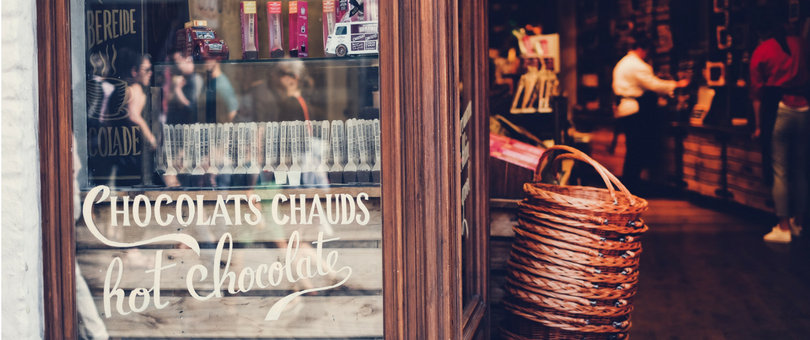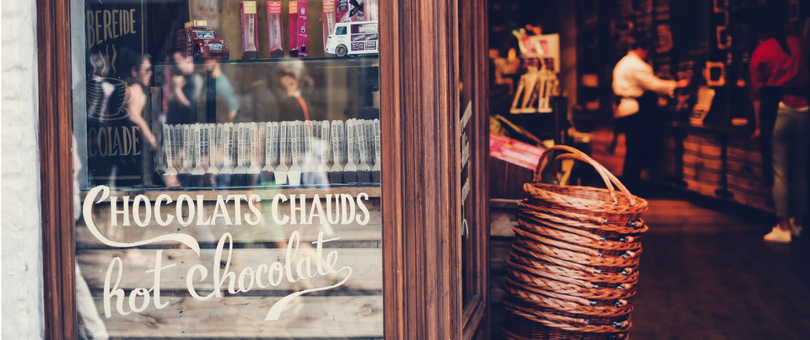 As a brick-and-mortar retailer, the cost of staying “open for business” is much higher than for online-only merchants. And while staying open 24/7 might initially sound like a good way to boost sales, it may not always help the bottom line. You have staffing, operating, and other associated expenses with keeping the doors open.
As a brick-and-mortar retailer, the cost of staying “open for business” is much higher than for online-only merchants. And while staying open 24/7 might initially sound like a good way to boost sales, it may not always help the bottom line. You have staffing, operating, and other associated expenses with keeping the doors open.
But that doesn’t mean that once you flip the sign from “open” to “closed” that you have to stop generating revenue. In fact, there are ways that other retailers have thought outside the box to both directly and indirectly affect sales in an upward trajectory outside of normal business hours. Below, we’ll take a look at four ways you can keep the cash rolling in after you shut your doors.
Share Your Space
Consider opening your doors to more than just shoppers. If you have the square footage, you can rent out a portion of your store to other retailers or businesses. They could set up shop, be it permanently or pop-up-in-a-shop, and you could charge rent or a commission on their sales, creating more of a passive income stream. Just make sure they have a separate entrance or that you can easily distinguish the two so you don’t need to stay open when they’re there.
Sharing your store could also mean turning it into a community space of sorts, which will establish strong connections with the local market and create a positive image for your brand.
Birch & Main, a candle shop in Port Jefferson, NY, has done exactly that. “We love to use our space as a community center after hours,” says founder Michael Mcpolin. “Our main focus is our candle and body line, but we are considered a lifestyle boutique.”
Birch & Main opens their doors to outsiders to host workshops, private events, classes and more. “The minimal cost not only helps generate a higher dollar per square foot, but it has grown so quickly that it now contributes up to 25% of the business,” Mcpolin says.
Self-Serve Shopping
Okay, let’s first start out with what we mean by “self-serve shopping.” This is when customers can purchase something from your store without needing a sales associate present to administer the transaction. The customer can do everything themselves, from product selection to payment and fulfillment.
The way you can execute this idea varies greatly and really depends on your business and your customer. One straightforward tactic that’s pretty simple to execute is through a vending machine.
University Bicycles in Boulder, CO, for example, has a vending machine that’s accessible to passersby. But it’s not your average vending machine with chips and Gatorade. Instead, they’ve stocked the vending machine with Clif Bars and other biker-friendly treats (which also appease the local consumer base, as Boulder is a health-conscious and active town).
Here, they’re not only making sales around the clock, they’re also building a reputation with consumers who otherwise may not have heard of them.
A couple more ideas to execute on the self-serve shopping:
- Install touchscreens or interactive kiosks/displays with which customers can browse and even purchase products. If nothing else, allow them to bookmark or put products on hold if you don’t want to or can’t accommodate transactions.
- Allow for the same functionality on your website. Even if there’s no ecommerce element to your business, you can allow customers to put products on hold so they can stop in during opening hours and know their merchandise is waiting for them.
Host In-Store Events and Workshops
Brick-and-mortar retailers can also host in-store events and workshops. They build buzz, create community, and establish and nurture customer relationships. Plus, it gives you the chance to showcase your products and industry expertise, which creates trust with shoppers. And we all know that more trust = more sales.
FURTHER READING: Learn more about how hosting in-store events can help build community and customer loyalty.
ScrubzBody™️ Skin Care, which sells — you guessed it — skincare products in its Farmingdale, NY, shop, hosts “Make Your Own” parties after hours. FOUNDER Roberta Perry says the idea came from her late sister, inspired by the hands-on crafting parties that her children often attended. They realized spa parties were popular in salons and similar businesses, so the idea of the “Make Your Own” body scrubs parties was born.
“[The parties] have turned us into an involved community business and not just a retail store,” Perry says. “It has brought in new customers that would’ve never known about us if not for being invited to a party.”
And she has the numbers to prove it: At their original location, party sales accounted for roughly 8% of annual revenue. After moving to a new location where they introduced a dedicated party room at the front of the store, that number increased to 30%.
Plus, through their scrub discount program, party-goers can return with their jars and get a discounted refill — a strategic way to drive repeat sales.
“Then we know they’ve been converted from party person to a member of our family,” Perry says.
United By Blue is another retailer that hosts events. They take a more varied approach for the events at their three locations, covering different topics and themes. Some events are even capped in attendance, with a limit of 20 guests, while others attract upwards of 250 potential customers. That was the case for their kick-off party hosted in collaboration with Oxford Pennant and True Hand Society.
Brand Ambassadors
Brand ambassadors are somewhat of a hybrid between influencers and traveling salespeople. Many brands that target college students, for example, will hire campus reps to represent their brand, spread the word, and sell products to other students.
Online retailers use influencers and/or brand ambassadors a lot, especially on visual social media platforms like Instagram.
A post shared by Whitney Port (@whitneyeveport) on Feb 24, 2018 at 6:10pm PST
But brick-and-mortar retailers can take a more localized approach to engaging brand ambassadors. Look for local influencers or even at your own existing customer base to see who may be effective in helping you spread the word and sell more products.
Brand ambassadors are typically paid on commission or, sometimes, you can get them to do it in exchange for free or discounted merchandise. It requires little effort and expense on your part, and the ambassadors can sell round the clock, before, during and after hours.
Open an Online Store
Day two at the #wachusettmountain Oktoberfest. Folks are loving our #spicyketchup #foodies
A post shared by Little Acre Gourmet Foods (@littleacregourmet) on Oct 22, 2017 at 8:22am PDT
While the majority or retail sales still happen in-store, ecommerce is growing exponentially. In fact, ecommerce growth is exceeding brick and mortar, with 17% increase in online sales compared to just 3.5% for in-store sales, according to data by ICSC.
That doesn’t mean retailers should throw in the towel or go all-in on ecommerce, but it does signify the importance of adapting and catering to multichannel consumer behavior. If you haven’t already, consider launching an online store that can sell 24 hours a day, 7 days a week.
And when you sell online, you’re reaching a larger audience. Rather than limiting yourself to a geographical area, you can reach the seemingly infinite pool of online shoppers. Plus, you don’t need to make a huge investment to launch an online store, especially considering you’ve already got the products and an existing customer base.
One such example is Little Acre Gourmet Foods, a gourmet condiment creator that began selling at farmer’s markets and then eventually set up their own ecommerce site.
Ready to launch your online store? Find out how to build, launch and grow a profitable online store >

